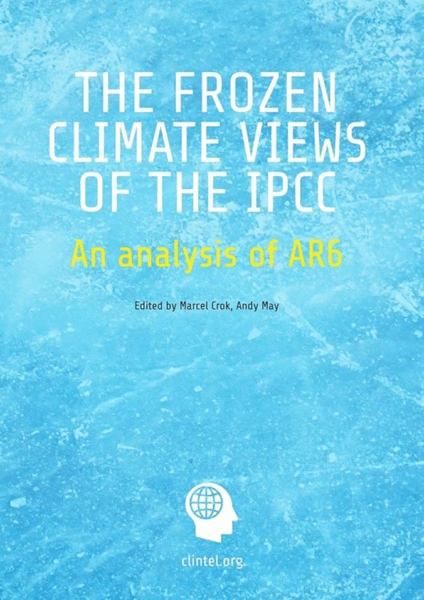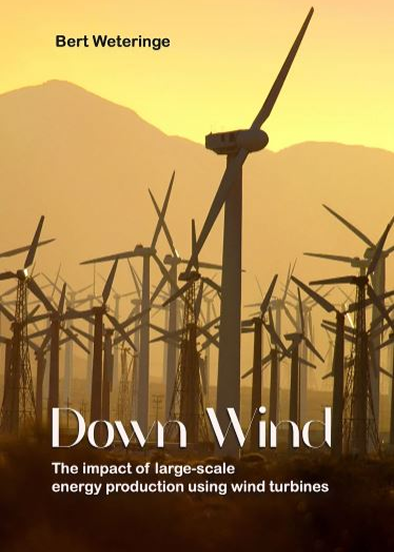Another ‘scientific’ attack on the oil majors
According to ‘Carbon Majors and the Scientific Case for Climate Liability‘, a paper published in Nature last month, it is now possible to quantify the climate damages caused by each of the world’s biggest oil and gas companies. By Tilak Doshi, published originally at Dailysceptic.org
The drumbeat of climate litigation has grown louder in recent years, fuelled by activists and dubious science. In this crusade against major oil and gas companies, ‘attribution science’ has been a fast-growing field of climate research which is explicitly meant to serve legal ends. According to the World Weather Attribution initiative, “Unlike every other branch of climate science or science in general, event attribution was originally suggested with the courts in mind.”
According to ‘Carbon Majors and the Scientific Case for Climate Liability‘, a paper published in Nature last month, it is now possible to quantify the climate damages caused by each of the world’s biggest oil and gas companies. Christopher Callahan and Justin Mankin, co-authors of the peer-reviewed paper, argue that “the scientific case for climate liability is closed”. In their paper, they claim to link oil and gas companies’ CO2 emissions to specific weather events and trillions in economic damages.
This audacious attempt to pin tort liability on oil and gas giants like Saudi Aramco and ExxonMobil rests on shaky economic and scientific grounds and ignores the immense benefits of fossil fuels.
Given the high stakes in the litigious turn of climate change alarmists, this paper’s assertions, flawed assumptions and the embedded activist machinery deserve a thorough debunking
The ‘Carbon Majors’ Paper: A Blueprint for Climate Litigation
The central assertion of Callahan and Jenkin is that advancements in climate attribution science enable courts to hold fossil fuel companies liable for damages caused by global warming. The authors propose an “end-to-end” attribution framework that links emissions from major oil and gas firms to specific extreme weather events — such as heatwaves, floods and droughts — and quantifies resulting economic losses. Using “scope 1” (direct emissions from producing oil and gas) and “scope 3” (consumer emissions from combustion of fuels) data, peer-reviewed climate models (e.g. CMIP6) and econometric methods, the paper estimates, for instance, that Chevron’s emissions from 1991 to 2020 caused $791 billion to $3.6 trillion in heat-related losses.
The framework relies on three key steps:
- Attribution of CO2 to Global Mean Surface Temperature (GMST): The authors use models to estimate how companies’ emissions contribute to global warming.
- Pattern Scaling for Local Weather: They apply “pattern scaling” methods to translate GMST increases into regional temperature extremes, such as the hottest five-day period (Tx5d).
- Empirical Damage Functions: Econometric models estimate economic losses (e.g. income declines, agricultural losses) from these extremes, drawing on regional GDP per capita data.
The paper positions this framework as a legal game-changer for climate liability. It cites ongoing lawsuits such as an Oregon county’s claim against oil companies for the 2021 Pacific Northwest heatwave. The paper advocates its “end-to-end attribution framework” to align with the many activist lawsuits targeting major energy producers. The authors argue that tort law, akin to tobacco litigation, can hold companies accountable for “particularised harms”, offering a transparent, reproducible method for courts to assess liability.
A Flawed Economic Case: Unravelling the Assumptions
The paper’s assertions rest on three contested causal chains — CO2 to global mean surface temperature (GMST), GMST to extreme local weather events, and extreme weather events to human welfare — each riddled with uncertainty. Meanwhile, it dismisses the greening effects of CO2 and the foundational role of fossil fuels in modern civilisation, skewing the cost-benefit analysis (CBA) central to sound economic policy.
The paper assumes a direct link between CO2 emissions and GMST, but this relationship is far from settled. Climate sensitivity — how much warming results from a doubling of CO2 and other greenhouse gases of which water vapour is the most significant — remains a subject of unresolved scientific debate. Estimates range from 1.5°C to 4.5°C, with some studies, like those by Nic Lewis and Judith Curry, suggesting lower sensitivities based on observational data rather than computer model simulations.
The paper’s reliance on CMIP6 models, which often overestimate historical warming, introduces significant uncertainty. Natural factors, such as solar variability, celestial orbits and volcanic activity, further muddy the attribution of GMST changes to CO2 or greenhouse gases alone. By treating CO2 as the sole driver of warming, the authors overstate the causal role of fossil fuel companies, ignoring the complex, multivariate nature of climate dynamics. This oversimplification inflates economic damage estimates and misguides courts into assigning liability based on unproven premises.
Even the very concept of a global mean temperature is subject to much qualification as an actual measure. It is often wrongly treated as a kind of single, direct instrumental measurement when it is really the average of widely scattered station data. As Richard S. Lindzen and John R. Christy suggest, at least thus far, “the one-degree Celsius increase in the global mean since 1900 is swamped by the normal variations at individual stations, and so bears little relation to what is actually going on at a particular one”.
The paper’s use of “pattern scaling” to relate GMST to local weather extremes is even more problematic. Pattern scaling assumes a linear relationship between global temperature increases and regional weather patterns, but this method oversimplifies the chaotic and non-linear nature of climate systems. Local weather events are influenced by regional factors that global models struggle to capture. Studies by the IPCC and Roger Pielke Jr, for instance, highlight that extreme weather trends (e.g. hurricanes, heatwaves) show no consistent increase attributable to climate change when normalised for population and economic growth.
The paper’s wide damage ranges ($791 billion to $3,600 billion for Chevron) reflect this uncertainty, yet it presents these figures as actionable for litigation. From an economic perspective, such speculative estimates fail to meet the precision required for tort law’s ‘but-for’ causation (which would show that the plaintiff would not have suffered damages but for the actions of the defendant). This renders the attribution of specific events to individual companies a legal and scientific fantasy.
The final link — local weather extremes to human welfare — is just as weak. The paper’s econometric models estimate losses like income declines or crop failures, but these rely on speculative counterfactuals and data-scarce regions. The law and economics literature, exemplified by Richard Posner’s seminal work, demands that damages be quantifiable and directly attributable, yet the paper’s estimates are probabilistic and diffuse.
Moreover, the paper ignores societal adaptation measures — improved infrastructure, air conditioning, crop resilience — that mitigate weather impacts. Economically, these models overstate costs by neglecting the dynamic adaptability that has historically reduced weather-related mortality and economic losses, as documented most consistently by Bjorn Lomborg. It is indeed perverse to argue for constraints on the supply of fossil fuels when it is their very accessibility that allows humans to adapt to adverse weather events. Building shore and flood protection structures, drainage and irrigation infrastructure and sturdier housing — should they be necessary – need cheap energy.
The Greening Effect of CO2: A Net Benefit Ignored
Perhaps the most glaring omission is the paper’s failure to acknowledge the positive effects of CO2. Far from being a pollutant, the trace gas CO2 is a ‘plant fertiliser’ required for photosynthesis, driving global greening and agricultural productivity. NASA satellite data show a 14% increase in global leaf area from 1982 to 2015, largely due to CO2 fertilisation, boosting crop yields by 15-30% for staples like wheat and rice. Studies by Craig Idso and the CO2 Coalition suggest that CO2’s benefits — enhanced food security, reduced hunger — outweigh its costs, particularly in relatively arid developing nations. Proper cost-benefit analysis of climate-economy models, as advocated by economics Noble laureate William Nordhaus, weigh these benefits against alleged harms. By omitting CO2’s positive externalities, the paper distorts the net economic impact of fossil fuel emissions, undermining its liability claims.
In their failure to include the direct benefits of fossil fuels to willing buyers, the authors of ‘Carbon Majors’ betray the egregious nature of their intent in engaging in tactical ‘attribution science’. In their dismissal of fossil fuels’ role in underpinning modern civilisation, their advocacy against oil and gas companies also reveals their profound lack of concern for human flourishing.
Since the Industrial Revolution, oil, gas, and coal have powered economic growth, lifting billions out of poverty. Global real GDP per capita soared from $1,500 in 1820 to over $10,000 by 2020, driven by fossil fuel-enabled urbanisation and industrialisation. In 2023, these fuels met over 80% of global energy needs, providing heating, cooling, cooking, mobility and fertilisers critical for agriculture. The ‘four pillars of modern civilisation‘ – ammonia (for fertilisers), cement, steel and plastics — require ready access to cheap fossil fuels. The petrochemical industry, reliant on oil, produces plastics, pharmaceuticals and materials essential to modern life.
The ‘Carbon Majors’ paper is not a neutral academic exercise but a cog in a climate-activist machine. The paper’s trillion-dollar damage claims against oil and gas companies ignore the benefits they confer on willing buyers. If successful in proposing liability against fossil fuel companies, climate litigation will raise energy costs, harm consumers and stifle development.
The economic consequences of the paper’s liability framework are dire. Holding companies liable for historical and lawful emissions risks bankrupting key industries, raising energy prices and disrupting supply chains. Low-income households and developing nations, reliant on affordable energy, would bear the brunt, but everyone will be affected. The paper’s retrospective approach violates fairness, as fossil fuel use is a collective societal choice in free market economies, not a corporate conspiracy. Litigation diverts resources from innovation and adaptation — better infrastructure, resilient crops — to legal battles that enrich activist firms.
A Call for Economic and Scientific Integrity
The climate lawsuits that Callahan and Mankin support are driven by firms like Sher Edling LLP and funded by billionaire foundations such as the Rockefeller Family Fund. These groups, alongside NGOs like ExxonKnew, pursue ‘legislation through litigation’, bypassing democratic processes. The US Department of Government Efficiency (DOGE) has raised concerns about USAID funding activist environmental NGOs.
The US Justice Department filed lawsuits against four states last week, claiming their climate actions conflict with federal authority and President Donald Trump’s energy dominance agenda. On April 30th, the DOJ filed lawsuits against Hawaii and Michigan over their plans for legal action against fossil fuel companies for harms caused by climate change. A day later, the department sued New York and Vermont, challenging their climate superfund laws that would force fossil fuel companies to pay into state-based funds based on previous greenhouse gas emissions.
This activist-driven approach distorts any fair consideration of cost-benefit trade-offs by prioritising ideological goals — demonising fossil fuels — over objective analysis. Contingency fees and foundation grants for law firms incentivise exaggerated claims, inflating damages while ignoring benefits, contrary to tort law’s compensatory purpose. The paper’s silence on these influences betrays its complicity in this agenda, undermining its credibility.
The ‘Carbon Majors’ authors’ attempt to pin climate liability on fossil fuel companies is an economic and scientific folly. Its causal chains — CO2 to global temperature (GMST), GMST to local weather, local weather to welfare — are fraught with uncertainty and fails to meet tort law’s rigour. Its economic reasoning collapses under scrutiny, built on a house of cards with dubious scientific assertions and activist bias.
By ignoring CO2’s greening benefits and fossil fuels’ foundational role in modern civilisation and by presenting a one-sided case against oil and gas companies for trillion-dollar damages, the paper skews any reasonable assessment of trade-offs facing society. Policymakers should reject this spurious crusade and embrace market-based solutions that balance costs, benefits and the undeniable contributions of fossil fuels to human progress.
Dr Tilak K. Doshi is the Daily Sceptic‘s Energy Editor. He is an economist, a member of the CO2 Coalition and a former contributor to Forbes. Follow him on Substack and X.
more news
The Forced EV Revolution — the Big-government Boom that Busted and Ford alone blew $20b US
Jo Nova about the EV bubble, or what’s left of it, that popped this week.
Europe’s ‘Green’ Emperor Is Naked and Cold
Europe stands as the self-proclaimed cathedral of the “green” transition. Bureaucrats in Brussels and politicians in Berlin have spent decades lecturing the world on the moral necessity to abandon hydrocarbons. They have constructed a narrative of the European Union as a shining city powered by the breeze and sun, modeling a net-zero utopia.
Wrong Again PBS, UN Is Pushing Another False Climate Crisis Report
Explore why this new climate report from the U.N., and its coverage by PBS, may not be telling the full story — and what that means for public understanding of climate science.






